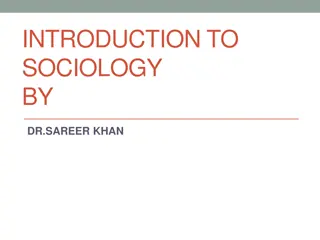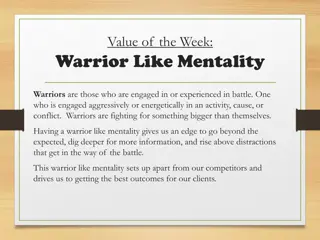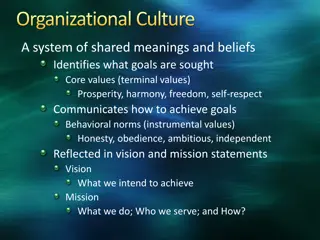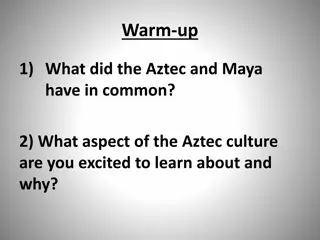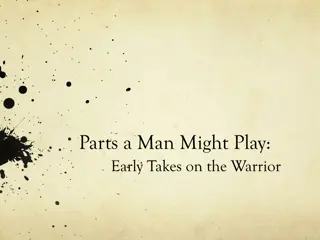Aztec Warrior Training and Culture
Warriors held a significant role in Aztec society, with boys receiving symbolic items at birth marking them as future warriors. Training began at fifteen, with youths joining seasoned warriors on campaigns to familiarize themselves with military life. At twenty, those interested officially entered war. Success often depended on a warrior sponsor secured by the youth's parents, leading to high nobility sons having better chances in battle.
Uploaded on Feb 17, 2025 | 0 Views
Download Presentation

Please find below an Image/Link to download the presentation.
The content on the website is provided AS IS for your information and personal use only. It may not be sold, licensed, or shared on other websites without obtaining consent from the author.If you encounter any issues during the download, it is possible that the publisher has removed the file from their server.
You are allowed to download the files provided on this website for personal or commercial use, subject to the condition that they are used lawfully. All files are the property of their respective owners.
The content on the website is provided AS IS for your information and personal use only. It may not be sold, licensed, or shared on other websites without obtaining consent from the author.
E N D
Presentation Transcript
Eagle Warrior Scene of Battle, Codex Azcatitlan Jaguar Warrior
Warriors were essential to Aztec life and culture. At birth an Aztec boy would receive two symbols of being a warrior. A shield would be placed in his left hand, and an arrow would be placed in his right. After a short ceremony the boy's umbilical cord, shield, and arrow would be taken to a battlefield to be buried by a renowned warrior. These parts would symbol the rise of a warrior.
When formal training in handling weapons began at age fifteen, youth would begin to accompany the seasoned warriors on campaigns so that they could become accustomed to military life and lose fear of battle. At age twenty, those who wanted to become warriors officially went to war. The parents of the youth sought out veteran warriors, bringing them foods and gifts with the objective of securing a warrior to be the sponsor of their child. Thus, sons of high nobility tended to succeed more often in war.


![READ [PDF] Her Viking Dragon Warrior (Viking Ancestors: Age of Embers Book 2)](/thumb/42246/read-pdf-her-viking-dragon-warrior-viking-ancestors-age-of-embers-book-2.jpg)


